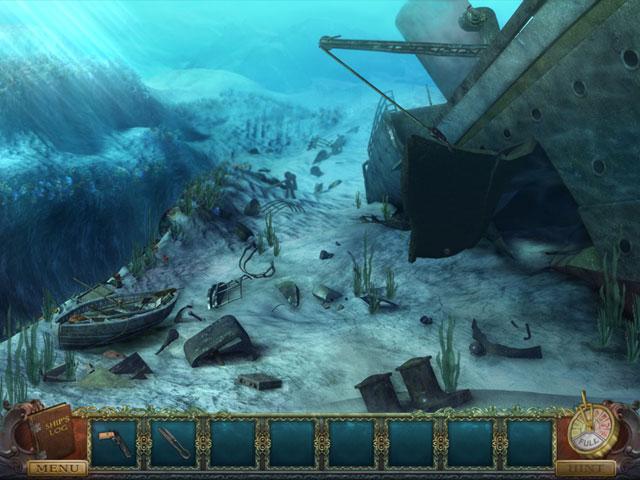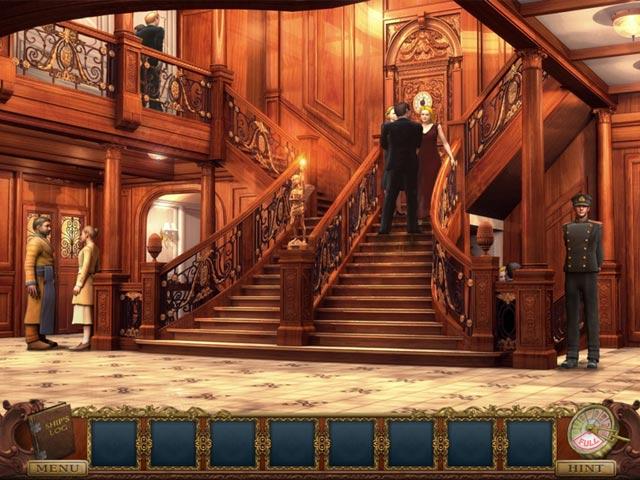- Wondering how to get Monopoly GO! free rolls? Well, you’ve come to the right place. In this guide, we provide you with a bunch of tips and tricks to get some free rolls for the hit new mobile game. We’ll …
Best Roblox Horror Games to Play Right Now – Updated Weekly
By Adele Wilson
Our Best Roblox Horror Games guide features the scariest and most creative experiences to play right now on the platform!The BEST Roblox Games of The Week – Games You Need To Play!
By Sho Roberts
Our feature shares our pick for the Best Roblox Games of the week! With our feature, we guarantee you'll find something new to play!All Grades in Type Soul – Each Race Explained
By Adele Wilson
Our All Grades in Type Soul guide lists every grade in the game for all races, including how to increase your grade quickly!
Hidden Mysteries: Return to Titanic Review
As we acknowledge the 100-year anniversary of the sinking of the Titanic, we find game developers walking a fine line between creating a game that’s respectful to the real lives lost and also entertaining to play. With Hidden Mysteries: Return to Titanic, the gameplay allows you to explore the Titanic both before and after its demise, but the story is such that the game could have taken place anywhere, making the Titanic setting seem more like an afterthought than a necessity.

Hidden Mysteries: Return to Titanic seems to hit a few icebergs of its own
As we acknowledge the 100-year anniversary of the sinking of the Titanic, we find game developers walking a fine line between creating a game that’s respectful to the real lives lost and also entertaining to play. With Hidden Mysteries: Return to Titanic, the gameplay allows you to explore the Titanic both before and after its demise, but the story is such that the game could have taken place anywhere, making the Titanic setting seem more like an afterthought than a necessity.
In Return to Titanic, we’re placed in the role of a man with two identities, sent undercover on the Titanic’s maiden voyage as a gossip columnist who is lost during the ship’s sinking. Your questionable history in life has cursed your soul to eternal struggle as you find yourself trapped in the wreckage of the ship and are told by a dark, smoky figure (what we can only assume is an embodiment of “fate”) that you’ll need to help other souls find freedom and peace before you too can finally rest.

Gameplay allows you to speak with other spirits, each of which gives you the ability to travel through time to return to the Titanic hours or minutes before it collided with the iceberg. In this way, you’ll be able to change the course of events in either the past or present to help souls find rest or just to help yourself on your own adventure. Unfortunately, this mechanic is often flawed, with some of your interactions causing no differences in the past or present, and true changes only occurring when the game “wants” them to. Putting it simply, oversights run rampant throughout the game, and we apparently weren’t supposed to notice.
Hidden object scenes are fairly easy to complete, with necessary items standing out from their backgrounds quite well, but some portions of the game throw out too many scenes with no breaks in between. As for the puzzle system, these puzzles deal far too much with tile sliding or swapping tasks than anything truly unique. That being the case, they’ll be either hit or miss for most players, depending on their own abilities of spatial reasoning. You can skip puzzles if they prove to be too challenging, but both the puzzle skip and hint recharge meter fill at a rate that is agonizingly slow.

As you begin to save the souls of other trapped passengers, other areas of the wreckage and the original ship become open for exploration. This introduces an element of backtracking, and forces you to view some of the many technical errors all the more frequently. Random pixel lines show up in hallways or on doorknobs and other key items, and graphical tearing ruins many animations or cutscenes. The game’s overall graphical theme works well enough, but these instances scream of rushed development or a simple lack of quality assurance as it appears that so many images were spliced together, but no one actually checked to see if the lines matched up.
Ultimately, the gameplay setup here is standard (such “save their/your soul(s)” stories are nothing new), but the use of the Titanic as the backdrop is a bit questionable due to the game’s overabundance of creative liberty. Perhaps if the gameplay was more polished, without so many technical and graphical errors or design flaws I might be more forgiving of the game’s need to turn the Titanic into a time-traveling ghost story, but as it stands, I can’t help but feel that this was more than a bit of a “cash-in” on the 100-year anniversary of the tragedy and not a true attempt at entertainment.
[While available on multiple platforms, our review was constructed using the PC version]

The good

The bad
More articles...
Monopoly GO! Free Rolls – Links For Free Dice
By Glen Fox
Wondering how to get Monopoly GO! free rolls? Well, you’ve come to the right place. In this guide, we provide you with a bunch of tips and tricks to get some free rolls for the hit new mobile game. We’ll …Best Roblox Horror Games to Play Right Now – Updated Weekly
By Adele Wilson
Our Best Roblox Horror Games guide features the scariest and most creative experiences to play right now on the platform!The BEST Roblox Games of The Week – Games You Need To Play!
By Sho Roberts
Our feature shares our pick for the Best Roblox Games of the week! With our feature, we guarantee you'll find something new to play!All Grades in Type Soul – Each Race Explained
By Adele Wilson
Our All Grades in Type Soul guide lists every grade in the game for all races, including how to increase your grade quickly!







